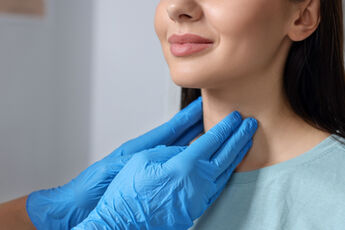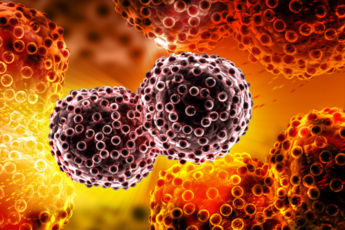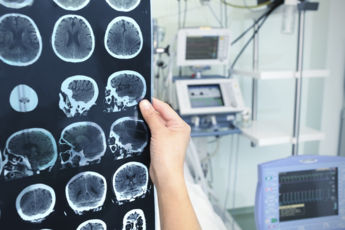Närviline põis 14.05.18 / Perearst
Külastaja küsib:
Tere. Ei tea kas pöörduda tuleks teie juurde või kuskile mujale aga kirjutan siiski siia oma loo ära.
Olen 26-aastane naine. Nimelt juba mitmeid aastaid tagasi algasid mul põie hädad. Kui kuskile lähen, näiteks poodi, kellegile külla, lasteaeda, arstile on mul alati ärevus sees ja lihtsalt koguaeg tahaks wc pissile. Arsti ukse taga oodates käingi iga 5 minuti tagant. Olen käinud naistarstil, seat selgus mingi bakter, mis raviti ilmselt tablettidega välja aga endisel ei läinud hädad üle. Käisin igalpoool arstidel Tartus, Rakveres- uroloogide juures ja tallinnas põie mahutavuse uuringul. Lõpuks siis pandi diagnoos perearsti poolt stress-kusepidamatus.
Ise nimetan seda nüüdseks närviliseks põieks. Ilmselt on asi ikkagi mu peas ,miski tekitab seda tungi ,et mul on vaja käia wc.
Nüüd on juba mitu aastat möödas kus ma pole enam ühegi arsti juures selle murega käinud.( jäin rasedaks ja kasvatan nüüd last kes varsti saab 3-aastaseks).
Kirjutan teile kuna see on hakanud tõsiselt mu elu segama. Vana töökoht ei sobi mulle lapse kõrvalt enam, kuna hommikust õhtuni tööl. Ei sa ka uut otsida oma probleemiga. Kuidas lähen võõrasse kohta, kui käin nagu haige wc vahet.
Lastaeda üritustele ei saa minna, kuna seal puudub vanematele wc ja pinge laes ja ei suuda kohapeal istuda. Jne.
Ainult kodus on mul okei olla. Seal ma ei jookse iga viie minuti tagant wc vahet- asi ma arvan selles et kodus on mul kindel wc ja alati saan sinna kui vajadus.
Ilmselt on mul hirm, et lasen ennast täis kui kohe wc ei saa, kui see närv üles keerutab ennast. Käed lähevad higiseks ja tung nii tugev, et jookse nii kiiresti kui saad, kui tekib olukord et kohe ei saa wc.
Ma ise arvan, et kunagi oligi bakteri tekitatud aga seda ei ravitud välja piisavalt kiiresti ja nüüd ongi võibolla kõik korras. Aga see kestis lihtsalt nii kaua ,et nüüd ongi närviline põis ,mis sunnib mind vahendeid valimata minema wc, metsa alla kuhu iganes.
Ma ei oska enam kuskile pöörduda, see on mu elu nii raskeks muutnud. Kuskile minna ei saa ega käia.
Arst vastas:

dr Madis Veskimägi
Perearst
Tõstamaa Tervisekeskus
Tere !
Tänan usalduse eest. Olen kindel, et Teil puudub tõsine orgaaniline ehk kehaline haigus. Vaevused sobivad Teie märgitud närvilise põie ehk siis stress-inkontinentsile. See on sage probleem, kuid sellest eriti ei räägita. Arstide huvi kipub raugema, kui selgub, et analüüsid-uuringud on korras. Netis on sellest palju materjali. Ise soovitan Mayo kliiniku patsiendi infot. Näiteks siit https://www.mayoclinic.org/diseases-conditions/overactive-bladder/symptoms-causes/syc-20355715 ja siit : https://www.mayoclinic.org/diseases-conditions/overactive-bladder/diagnosis-treatment/drc-20355721. Allpool esitan copy-paste viimasest lingist.
Mõned soovitused- teadlik urineerimine kella järgi. Hommikul ärgates nt kl 7, kl 11 , kl 15, kl 18 ja kl 23 enne magamaminekut. Põie-vaagnalihaste trenn- Kegeli harjutused. Tuleb pingutada lihaseid nagu hoiaks tugevat pissihäda kinni, hoida nii nt 5-10 sek lõdvestada, korrata minutis 4-5 x. Seda saab teha igal pool ja pidevalt.
Kusemisärevuse eneseabi. Kui olete põie teadlikult tühjendanud, ja vedelikureziim on tavaline, ei saa põide koguda tavatu kogus uriini. Julge soovitus. Panna alla täiskasvanute "pampers" ja minna kohta, kus tavaliselt esineb tung urineerida. Vaadata, mis juhtub. Usun, et isegi kui tahaks, ei välju põiest tilkagi. Ja kui väljub, ei märka seda keegi. Aitab ka enesesisendus- põies ei ole uriini, tegemist on urineerimisärevusega, püksi ei saa midagi tulla, pean vastu, kohe vaevus taandub ja saan nautida üritust või kohta kus viibite. Nii järk-järgult harjutades suudate peagi kontrollida oma põit täielikult. On olemas ka ravimid, neid kirjutavad arstid usinalt, kuid enamus on ikka patsiendi teha. Ravimitel on ka kõrvaltoimed- suukuivus jm.
Loodan, et vastusest on veidi abi.
Head tervist soovides,
Madis Veskimägi
Diagnosis
If you have an abnormal urge to urinate, your doctor will check to make sure that you don't have an infection or blood in your urine. Your doctor may also want to make sure that you're emptying your bladder completely when you urinate.
Your doctor will look for clues that might also indicate contributing factors. The work-up will likely include a:
Medical history
Physical exam, focusing on your abdomen and genitals
Urine sample to test for infection, traces of blood or other abnormalities
Focused neurological exam that may identify sensory problems or abnormal reflexes
Special tests
Your doctor may order a simple urodynamic test to assess the function of your bladder and its ability to empty steadily and completely. These tests usually require a referral to a specialist, and may not be necessary to make a diagnosis or begin treatment. Tests include:
Measuring urine left in the bladder. This test is important if your bladder doesn't empty completely when you urinate or experience urinary incontinence. Remaining urine (postvoid residual urine) may cause symptoms identical to an overactive bladder.
To measure residual urine after you have voided, your doctor may request an ultrasound scan of your bladder or pass a thin tube (catheter) through the urethra and into your bladder to drain and measure the remaining urine.
Measuring urine flow rate. To measure the volume and speed of your voiding, you may be asked to urinate into a uroflowmeter. This device translates the data into a graph of changes in your flow rate.
Testing bladder pressures. Cystometry measures pressure in your bladder and in the surrounding region during bladder filling. During this test, your doctor uses a thin tube (catheter) to fill your bladder slowly with warm water. Another catheter with a pressure-measuring sensor is placed in your rectum or, if you're a woman, in your vagina.
This procedure can identify whether you have involuntary muscle contractions or a stiff bladder that's not able to store urine under low pressure.
Your doctor will review the results of any tests with you and suggest a treatment strategy.
Treatment
A combination of treatment strategies may be the best approach to relieve overactive bladder symptoms.
Behavioral interventions
Pelvic floor muscles in a woman
Female pelvic floor muscles
Location of pelvic floor muscles in a man
Male pelvic floor muscles
Behavioral interventions are the first choice in helping manage an overactive bladder. They're often effective, and they carry no side effects. Behavioral interventions may include:
Pelvic floor muscle exercises. Kegel exercises strengthen your pelvic floor muscles and urinary sphincter. These strengthened muscles can help you stop the bladder's involuntary contractions.
Your doctor or a physical therapist can help you learn how to do Kegel exercises correctly. It may take as long as six to eight weeks before you notice a difference in your symptoms.
Healthy weight. If you're overweight, losing weight may ease symptoms. Weight loss may help if you also have stress urinary incontinence.
Scheduled toilet trips. Setting a schedule for toileting — for example, every two to four hours — gets you on track to urinate at the same times every day rather than waiting until you feel the urge to urinate.
Intermittent catheterization. Using a catheter periodically to empty your bladder completely helps your bladder do what it can't do by itself. Ask your doctor if this approach is right for you.
Absorbent pads. Wearing absorbent pads or undergarments can protect your clothing and help you avoid embarrassing incidents, which means that you won't have to limit your activities. Absorbent garments come in a variety of sizes and absorbency levels.
Bladder training. Bladder training involves training yourself to delay voiding when you feel an urge to urinate. You begin with small delays, such as 30 minutes, and gradually work your way up to urinating every three to four hours. Bladder training is possible only if you're able to tighten (contract) your pelvic floor muscles successfully.
Medications
Medications that relax the bladder can be helpful for relieving symptoms of overactive bladder and reducing episodes of urge incontinence. These drugs include:
Tolterodine (Detrol, Detrol LA)
Oxybutynin (Ditropan XL)
Oxybutynin as a skin patch (Oxytrol)
Oxybutynin gel (Gelnique, Gelnique 3%)
Trospium (Sanctura)
Solifenacin (Vesicare)
Darifenacin (Enablex)
Mirabegron (Myrbetriq)
Fesoterodine (Toviaz)
Common side effects of most of these drugs include dry eyes and dry mouth, but drinking water to quench thirst can aggravate symptoms of overactive bladder. Constipation — another potential side effect — can aggravate your bladder symptoms. Extended-release forms of these medications, including the skin patch or gel, may cause fewer side effects.
Your doctor may recommend that you suck on a piece of sugar-free candy or chew sugar-free gum to relieve dry mouth, and use eyedrops to keep your eyes moist. Over-the-counter preparations, such as Biotene products, can be helpful for long-term dry mouth. To avoid constipation, your doctor might recommend a fiber-rich diet or use of stool softeners.
Bladder injections
OnabotulinumtoxinA (ON-ah-boch-yoo-lih-num-tox-in-A), also called Botox, is a protein from the bacteria that cause botulism illness. Used in small doses directly injected into bladder tissues, this protein partially paralyzes muscles.
Clinical research shows that it may be useful for severe urge incontinence. The temporary effects generally last five months or more, but repeat injections are necessary.
About half of people had side effects from these injections, including 9 percent who had urinary retention. So, if you're considering Botox treatments, you should be willing and able to catheterize yourself if urinary retention occurs.
Nerve stimulation
Regulating the nerve impulses to your bladder can improve overactive bladder symptoms.
One procedure uses a thin wire placed close to the sacral nerves — which carry signals to your bladder — where they pass near your tailbone.
This surgical procedure is often done with a trial of a temporary wire or as an advanced procedure in which the permanent electrode is implanted and a longer trial is performed prior to a surgical placement of the battery-powered pulse generator. Your doctor then uses a device connected to the wire to deliver electrical impulses to your bladder, similar to what a pacemaker does for the heart.
If this successfully reduces your symptoms, the wire is eventually connected to a small battery device that's placed under your skin.
Surgery
Surgery to treat overactive bladder is reserved for people with severe symptoms who don't respond to other treatments. The goal is to improve the bladder's ability to store urine and reduce pressure in the bladder. However, these procedures won't help relieve bladder pain. Interventions include:
Surgery to increase bladder capacity. This procedure uses pieces of your bowel to replace a portion of your bladder. This surgery is used only in cases of severe urge incontinence that doesn't respond to any other, more-conservative treatment measures. If you have this surgery, you may need to use a catheter intermittently for the rest of your life to empty your bladder.
Bladder removal. This procedure is used as a last resort and involves removing the bladder and surgically constructing a replacement bladder (neobladder) or an opening in the body (stoma) to attach a bag on the skin to collect urine.
Request an Appointment at Mayo Clinic
Clinical trials
Explore Mayo Clinic studies testing new treatments, interventions and tests as a means to prevent, detect, treat or manage this disease.
Lifestyle and home remedies
These lifestyle strategies may reduce overactive bladder symptoms:
Maintain a healthy weight. If you're overweight, losing weight may ease your symptoms. Heavier people are also at greater risk of stress urinary incontinence, which may improve with weight loss.
Don't restrict fluid. Ask your doctor how much fluid you need daily. If you don't drink enough, your urine becomes concentrated and can irritate the lining of your bladder. This increases the urge to urinate.
Limit foods and drinks that might irritate your bladder. Substances that may irritate the bladder include: caffeine, alcohol, apples, carbonated drinks, chocolate, citrus juice and fruit, chocolate, corn syrup, cranberries, spicy foods, honey, milk, sugar, artificial sweeteners, tea, tomatoes, and vinegar. If any of these worsen your symptoms, it might be wise to avoid them.
Alternative medicine
No complementary or alternative therapies have been proved to successfully treat overactive bladder. But treatments that might be helpful include:
Biofeedback. During biofeedback, you're connected to electrical sensors that help you measure and receive information about your body. The biofeedback sensors teach you how to make subtle changes in your body, such as strengthening your pelvic muscles so that when you have feelings of urgency you're better able to suppress them.
Acupuncture. Acupuncture practitioners treat you using extremely thin, disposable needles. Research has suggested that acupuncture might help ease the symptoms of overactive bladder.
Complementary treatments may not be covered by insurance, so check with your insurance company first.
Coping and support
Living with overactive bladder can be difficult. Consumer education and advocacy support groups such as the National Association for Continence can provide you with online resources and information, connecting you with people who experience overactive bladder and urge incontinence. Support groups offer the opportunity to voice concerns, learn new coping strategies and stay motivated to maintain self-care strategies.
Educating your family and friends about overactive bladder and your experiences with it may help you establish your own support network and reduce feelings of embarrassment. Once you start talking about it, you may be surprised to learn how common this condition really is.
Preparing for your appointment
For overactive bladder, you're likely to start by seeing your primary doctor. After your initial appointment, you may be referred to a specialist in urinary disorders in men and women (urologist), a specialist in urinary disorders in women (urogynecologist), or a specialist in physical therapy for diagnosis and treatment.
Here's some information to help you get ready for your appointment, and what to expect from your doctor.
What you can do
Keep a bladder diary for a few days, recording when, how much and what kind of fluids you consume, when you urinate, whether you feel an urge to urinate, and whether you experience incontinence. A bladder diary may help determine why you have to get up to urinate at night.
Tell your doctor how long you've had your symptoms and how they affect your day-to-day activities.
Note any other symptoms you're experiencing, particularly those related to your bowel function.
Let your doctor know if you have diabetes, have a neurological disease, or have had pelvic surgery or radiation treatments.
Make a list of all the medications, vitamins or supplements you take, as many medications can affect bladder function.
Write down questions to ask your doctor.
For overactive bladder, basic questions might include:
What are the possible causes of my symptoms?
Is my urine clear?
Do I empty my bladder well?
Is my pelvic floor muscle strength good enough for me to keep my bladder from contracting when I have an abnormal urge?
Do you recommend any other tests? Why?
What treatments are available, and which do you recommend for me?
What side effects can I expect from treatment?
Are there any dietary restrictions that could help?
How do my other health problems affect my bladder symptoms?
If I need to see a specialist, what can I expect?
Is there a generic alternative to the medicine you're prescribing?
Are there brochures or other printed material that I can have? What websites do you recommend?
What to expect from your doctor
Your doctor may use an overactive bladder questionnaire to make an assessment of your symptoms, asking questions such as:
How long have you had these symptoms?
Do you unexpectedly leak urine? How often?
What do your symptoms keep you from doing that you like to do?
During daily activities, such as walking or bending over, do you leak urine?
By Mayo Clinic Staff
Overactive bladder care at Mayo Clinic
Nõuanded teemal: Perearst
Närviline põis
Tere. Ei tea kas pöörduda tuleks teie juurde või kuskile mujale aga kirjutan siiski siia oma loo ära.
Olen 26-aastane naine. Nimelt juba mitmeid aastaid tagasi algasid mul põie hädad. Kui kuskile ...

Vastas dr Kristi Otsmaa
Tere!
Saan Teie kirjast aru, et viimastest uuringutest on möödas juba aastaid. Seetõttu soovitaksin pöörduda oma perearstile ja teatud uuringud korrata, et välistada kuseteede infektsioonid, diabeet, ...
Mure
Tere!
Sooviksin Teie kui perearsti arvamust. Panen kõik detailid kirja (äkki on olulised).
Olen 22. a naisterahvas, kasutan antipeebipille Regulon, rase pole olnud. Jaanuaris oli mul tupepõletik, ...

Vastas dr Madis Veskimägi
Tere
Küllap seal põies või sealkandis mõni pisik ikka toimetab. Ise mõtlen reale haigustele: põiepõletik, seenpõletik, ussnugilised, "närviline põis". Diagnoosi aitab täpsustada vastavad analüüsid ...
Vaata kõiki nõustamisi
Ei saanud vastust? Küsi arstilt:





